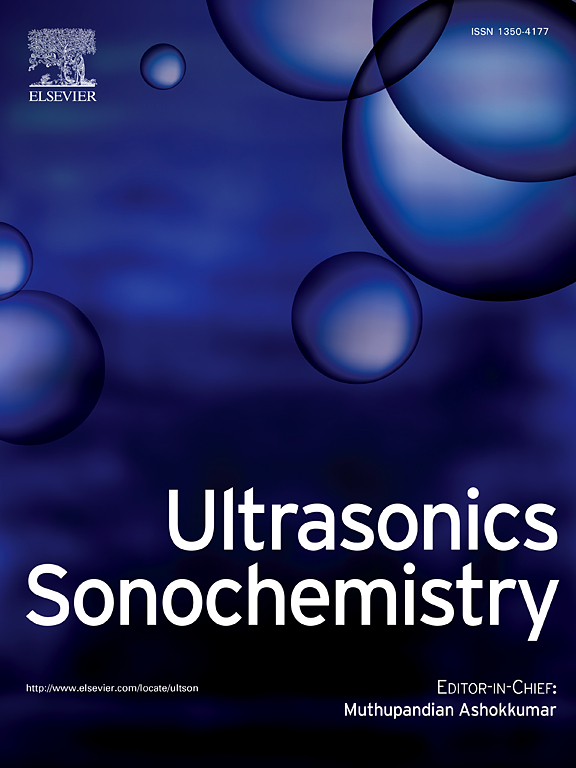Focusing on the mechanism of glycinin-soybean lipophilic protein hybrid gels: Effect of ultrasonic, subunit interactions, and formation process analysis
IF 8.7
1区 化学
Q1 ACOUSTICS
引用次数: 0
Abstract
Heat facilitates aggregation and gel formation of soybean proteins. Ultrasonic reduces the size of protein aggregates. This study examined the impact of glycinin (11S) subunits on soybean lipophilic proteins (SLPs) gel formation and underlying mechanisms. Effects of protein dispersion pretreatment with 400 W ultrasonic and associated mechanisms were assessed. Addition of the A- and B-subunits before and after ultrasonic minimally affected SLP secondary structure. A-subunit addition before ultrasonic negligibly affected SLP tertiary structure. Addition of the B-subunit after ultrasonic reduced hydrophobic thermal aggregation. However, the small B-subunit size was unfavorable for the formation of a gel matrix, which led to poor gel properties. In contrast, solubility of the A-subunit after ultrasonic was increased to 31.06 ± 1.62 %). Particle size was decreased to 43.33 ± 1.36 nm for A:SLP (1:2). Endogenous fluorescence spectroscopy demonstrated increased protein unfolding after ultrasonic and decreased disulfide bonds. These changes improved the gel state. Rheological and microstructural analyses revealed increased energy storage modulus and yield strain, accompanied by a more homogeneous microstructure following ultrasonic. Microscopic improvement resulted in increased encapsulated water within interstitial spaces of the A-SLP gel matrix. This enhanced water mobility in B-SLP gels, in turn weakening gel stability. The changes observed in B-SLP were primarily due to reduced hydrophobic interactions between the proteins. The findings clarify the effect of ultrasonic treatment on the formation of soybean globulin-SLP hybrid gels at the subunit level. The data provide a theoretical basis for the synergistic utilization of soybean proteins among different components.

求助全文
约1分钟内获得全文
求助全文
来源期刊

Ultrasonics Sonochemistry
化学-化学综合
CiteScore
15.80
自引率
11.90%
发文量
361
审稿时长
59 days
期刊介绍:
Ultrasonics Sonochemistry stands as a premier international journal dedicated to the publication of high-quality research articles primarily focusing on chemical reactions and reactors induced by ultrasonic waves, known as sonochemistry. Beyond chemical reactions, the journal also welcomes contributions related to cavitation-induced events and processing, including sonoluminescence, and the transformation of materials on chemical, physical, and biological levels.
Since its inception in 1994, Ultrasonics Sonochemistry has consistently maintained a top ranking in the "Acoustics" category, reflecting its esteemed reputation in the field. The journal publishes exceptional papers covering various areas of ultrasonics and sonochemistry. Its contributions are highly regarded by both academia and industry stakeholders, demonstrating its relevance and impact in advancing research and innovation.
文献相关原料
公司名称
产品信息
索莱宝
β-mercaptoethanol
索莱宝
Tris-base
 求助内容:
求助内容: 应助结果提醒方式:
应助结果提醒方式:


